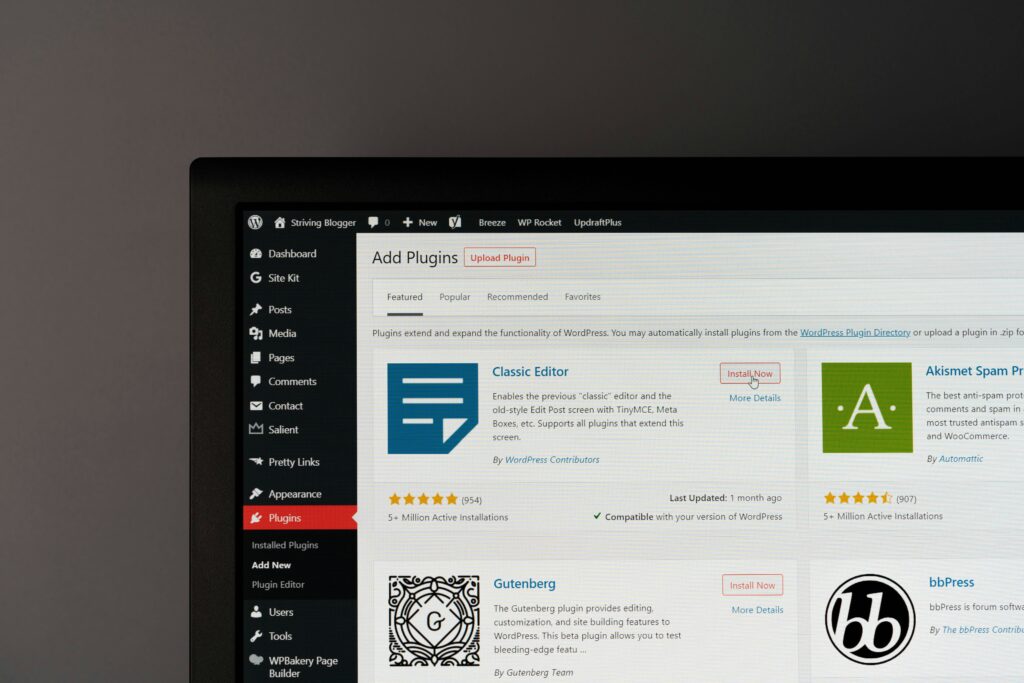WordPress is one of the most powerful platforms for SEO—but that doesn’t mean every WordPress site is automatically optimized for search engines. In fact, many site owners unknowingly make critical SEO mistakes that hold their rankings back.
In this post, I’ll break down the top 10 SEO mistakes WordPress users make, plus how to fix each one to improve visibility, traffic, and performance.
Not Setting a Focus Keyword for Each Page/Post
Mistake:
Publishing content without targeting a specific keyword means you’re not giving search engines a clear idea of what the page is about.
Fix:
Use an SEO plugin like Rank Math or Yoast SEO to assign a focus keyword to every post or page. Research keywords using tools like Google Keyword Planner, Ubersuggest, or Ahrefs before writing.
2. Poor URL Structure (Ugly Permalinks)
Mistake:
Leaving default permalinks like ?p=123 or having long URLs stuffed with stop words weakens SEO.
Fix:
Go to Settings → Permalinks and choose “Post name” structure. Keep URLs short, include your target keyword, and remove filler words like “and”, “the”, “of”.
3. Missing or Duplicate Meta Titles and Descriptions
Mistake:
Pages with missing, duplicated, or poorly written meta tags can confuse Google and reduce click-through rates.
Fix:
Use your SEO plugin to manually write unique meta titles and descriptions for each page. Make them compelling, include your keyword, and keep within Google’s character limits (title: ~60, description: ~160).
4. Ignoring Image Optimization
Mistake:
Uploading large, uncompressed images with no alt text slows your site and misses out on image search SEO.
Fix:
Compress images with ShortPixel, Smush, or TinyPNG
Use next-gen formats like WebP
Always include descriptive alt text using relevant keywords
5. Not Using an XML Sitemap
Mistake:
If you don’t submit a sitemap to search engines, they may not properly index your site.
Fix:
Your SEO plugin can generate a dynamic XML sitemap. Then, submit it to Google Search Console and Bing Webmaster Tools so search engines can crawl and index your pages faster.
6. Overusing Categories and Tags
Mistake:
Creating too many categories and tags creates thin, duplicate pages that Google may consider low quality.
Fix:
Stick to a clear content taxonomy:
Use categories for broad topics (5–10 max)
Use tags for specific topics (avoid tag spamming)
Noindex tag archives if they don’t offer unique value
7. Ignoring Mobile Optimization
Mistake:
A site that’s not responsive on mobile devices will lose rankings, especially since Google uses mobile-first indexing.
Fix:
Use a responsive WordPress theme
Test with Google’s Mobile-Friendly Test
Avoid popups or elements that break on mobile screens
8. Slow Site Speed
Mistake:
Page load time directly affects bounce rate and SEO rankings. A slow site means fewer conversions and lower visibility.
Fix:
Use LiteSpeed Cache or WP Rocket
Choose fast hosting (like SiteGround, Kinsta, or Cloudways)
Use a Content Delivery Network (CDN) like Cloudflare
Optimize fonts, images, and scripts
9. Not Securing Your Site (No HTTPS)
Mistake:
Running your site without HTTPS (SSL) not only scares users but also negatively impacts SEO.
Fix:
Most modern hosts provide a free SSL certificate. Enable it via your hosting dashboard or use Really Simple SSL plugin. Always redirect from HTTP to HTTPS.
10. Not Using Internal Linking Strategically
Mistake:
Publishing blog posts or pages without linking to related content limits SEO value and keeps users from exploring more.
Fix:
Link to relevant older posts within new content
Use keyword-rich anchor text
Build a content silo structure to organize posts by topic
Final Thoughts
Avoiding these common SEO mistakes can drastically improve your WordPress site’s visibility in search results. The best part? Most of these fixes are simple to implement once you know what to look for.
SEO is not just about ranking—it’s about providing value, performance, and a seamless experience for your visitors. Fix the basics, build smart content, and watch your traffic grow.



